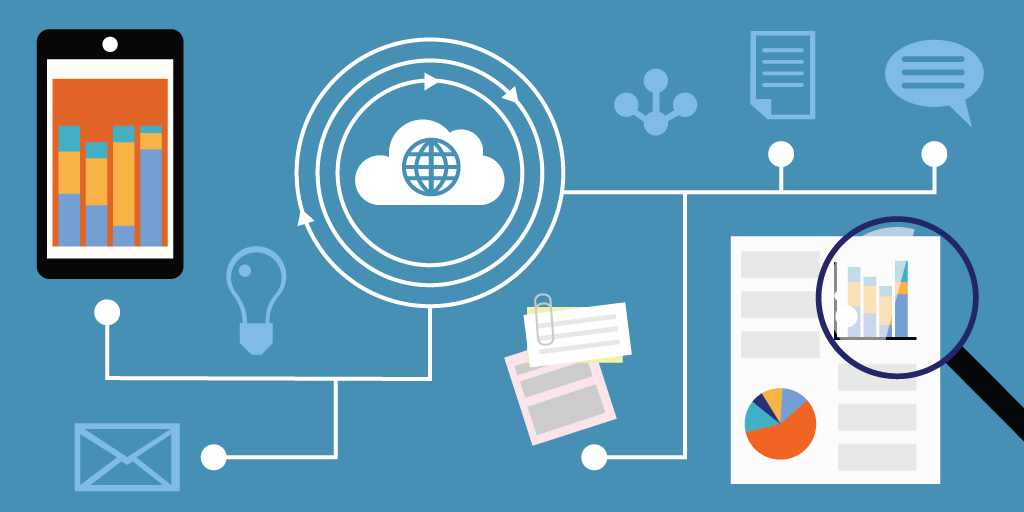Keeping customers happy isn’t just about being friendly. It’s about making sure every visit, call, or message leaves people feeling heard and helped. And the best way to do that is by tracking how satisfied they actually are.
According to Forbes, 96% of customers say good service drives their loyalty. That means if you’re not measuring satisfaction, you’re missing the full picture of what’s working — and what’s not.
In this blog, we’ll walk through why customer satisfaction matters, which metrics are worth tracking, and how to put those numbers to work in your day-to-day operations.
What Types of Metrics Measure Customer Satisfaction?
There’s no single way to measure how satisfied someone is. It depends on how they felt, how easy things were, and whether they’d come back again. That’s why most satisfaction metrics fall into three main types.
1. Emotional Metrics
These tell you how someone felt after their visit.
A common one here is CSAT — short for Customer Satisfaction Score. It’s usually just a one-question rating like “How satisfied were you with the service?” Simple but useful, especially right after a visit.
2. Effort-Based Metrics
This looks at how much effort someone had to put in.
The most used one is CES — Customer Effort Score. It asks things like “How easy was it to get what you needed today?” The less effort people have to make, the more likely they’ll come back.
3. Loyalty-Based Metrics
These help you see if people trust you enough to return or recommend you.
NPS — Net Promoter Score — is the go-to here. It asks, “How likely are you to recommend us to someone you know?” If the number’s low, you know there’s something missing in the experience.
4 Top Customer Satisfaction Metrics to Track
There are plenty of ways to measure how happy customers are, but a few stand out for being both simple and effective. These are the ones worth tracking regularly:
1. Post-Service CSAT Surveys
Customer Satisfaction Score (CSAT) is one of the most common measures for assessing service quality in a public sector environment. It provides a mechanism for measuring how satisfied citizens have been with a single experience, such as visiting a city hall, DMV, public clinic, etc., immediately following the service provided.
How CSAT is calculated:
Citizens are typically asked a question like:
“How satisfied were you with your experience today?”
They respond on a scale — commonly 1 to 5, where 1 = very dissatisfied and 5 = very satisfied.
The CSAT score is calculated using the formula:
CSAT (%) = (Number of satisfied responses / Total responses) × 100
Only responses rated 4 or 5 are considered "satisfied."
Example:
If 120 out of 150 respondents rated their visit 4 or 5:
CSAT = (120 ÷ 150) × 100 = 80%
Best practices:
Send surveys via SMS, email, or kiosk within minutes of the visit.
Keep them short with an optional comment box.
Use tools that automatically log responses into a dashboard for trend analysis.
You might also like - Customer Satisfaction – Make Your Customer Addicted to Your Business
2. Net Promoter Score (NPS)
Net Promoter Score (NPS) is a common measure of how loyal and satisfied people are with a service - a single point in time as well as over time. NPS is considered valuable in the public sector because of the insight it provides to understand not just how citizens evaluate government services, but their willingness to recommend government services to others.
What NPS Means
NPS is based on one standard question:
"How likely are you to recommend this service to a friend or colleague?"
Respondents often provide a scale-free response from 0 to 10, with those responses sorted into three categories:
Promoters (9–10): Citizens who are satisfied with the service as demonstrated through their enthusiasm and are likely to tell others positive things about the service.
Passives (7–8): Citizens who are satisfied, though not enthusiastic, about the service and are at risk of moving to more enthusiastic experiences from other service providers.
Detractors (0–6): Citizens who are unhappy with the service, and likely to disengage, complain, or tell others negative things about the service.
How NPS is Calculated
The score is derived by subtracting the percentage of Detractors from the percentage of Promoters:
NPS = % of Promoters − % of Detractors
For example, if a local health clinic receives 100 responses:
60 are Promoters
25 are Passives
15 are Detractors
Then the NPS would be:
60% – 15% = +45
The final score can range from −100 to +100, with higher numbers indicating stronger public support and satisfaction.
Best Practices for NPS in Local Government
When to Ask: Use SMS, email, or a kiosk immediately following your citizen's use of the service when the experience is still fresh.
Ask for Open Feedback: Always utilize a free-text question like, "What is the reason behind your score?" to gather insights behind the numbers.
Track Monthly/Quarterly: Keep track of NPS scores on a monthly or quarterly basis to monitor the impact of improvements (e.g. time, communication, etc) on citizen perceptions.
Breakdown NPS Data: Segment NPS scores by location, type of service, or even time of day to identify hidden trends.
3. First Contact Resolution Rate
First Contact Resolution (FCR) measures the percentage of citizen issues or requests that are fully resolved during the first interaction, without the need for follow-up calls, repeat visits, or escalations. In the context of public sector customer service, this metric is a powerful indicator of both service efficiency and citizen satisfaction.
How to Measure It
FCR can be calculated using a simple formula:
FCR = (Number of issues resolved on first contact ÷ Total number of issues) × 100
Example:
For example, if a city hall received 1,000 service requests, and 700 were completely resolved at first contact, then:
FCR = (700 / 1,000) × 100 = 70%
How to Improve FCR in Public Service
Give Employees the Tools: Equip the frontline employees with immediate access to information. Give them access to knowledge bases and cross-department databases to resolve more issues at first contact.
Communicate what Citizens Need: If citizens know upfront what documents or information they need (in a website, an email, or signage) it eliminates incomplete visits.
Track FCR for Every Channel: Our resolution through FCR will vary depending on whether the service is in-person, phone, or online. Tracking all of the channels will identify the weakest and allow us to focus our improvement efforts.
Train to be Empowering: Give employees the ability to act, approve, etc., without having to go to management for approval on every low-risk situation.
4. Customer Effort Score (CES)
Customer Effort Score (CES) measures the amount of effort someone needed to complete a task, such as: booking an appointment; getting help; problem resolution. The goal is simple. The more effort it takes, the less satisfied people will be. For government offices, CES is useful in determining whether or not your services are easy to access and work with - especially online.
What is Measured with CES
CES will typically ask one question:
“How easy was it to get the help you needed?”
Responses could score on a 5- or 7-point scale, from “Very difficult” to “Very easy”
High scores indicate people were able to complete what they were there for without too much effort
Low scores could indicate: confusing forms, long waits, unclear processes
How to Calculate CES
The way to calculate the CES is to take the average of all the responses.
For example:
If we get 100 people responding on a 7-point scale and the total score is 560:
560 divided by 100 = 5.6 CES score
The higher the score the better the service experience feels to the public.
How to Implement CES at Local Government
When: Immediately after a citizen responds to a request for a transaction — like renewing a license, or applying for a permit has been completed via SMS, email or kiosk.
Make it Specific: Phrase the CES question for each interaction, not the overall service, so the feedback is focused.
Look for Trends: If you see a drop with CES for one department, or one service; something is getting in the way - too many forms, unclear instructions, or response delays.
Use in conjunction with other metrics: CES works great in conjunction with satisfaction (CSAT) or loyalty (NPS); to give you a complete picture of both effort and emotion.
Helpful read - How Service Intelligence Helps You Run a Smarter Business
Best Practices to Use Customer Satisfaction Metrics
Metrics don’t mean much if they just sit in a report. To actually improve service, you need to use them the right way. That starts with tracking your own progress, not chasing someone else’s numbers.
1. Set Internal Benchmarks for Success
Don’t rely on outside comparisons. Every organization is different, and so are the people you serve.
Instead, focus on how your scores are changing over time. Are things getting better? Where are the gaps?
A report found that 73% of customers switch brands after just one bad customer service experience. Internal benchmarks help you track and improve those moments before they drive people away.
Some ways to do this:
Set a baseline for each key metric
Monitor changes month to month or quarter to quarter
Use feedback trends to spot where teams need support
2. Avoid Tunnel Vision With Metrics
Customer satisfaction metrics are useful, but they’re not the whole picture. If you chase high scores without looking at the full experience, you miss what really matters.
Take Sprint, for example. Years ago, they tied employee bonuses to NPS. It led to staff pressuring customers for higher scores, which backfired. The scores went up, but trust went down.
Poor customer service now costs businesses $338.5 billion globally every year. Focusing only on scores without improving the actual experience won’t help reduce that number.
Instead of treating metrics like a finish line, use them as a guide. Ask:
Are we helping people more effectively?
Do our changes actually improve the experience?
What’s the feedback behind the numbers?
3. Learn From Negative Feedback
Not all complaints are bad. In fact, some are the most helpful data you’ll get. They show you what’s not working and where people are getting stuck.
Studies show that 96% of unhappy customers don’t speak up—they just leave. Without tracking complaints and acting on them, you miss out on fixing problems early.
Think of complaints as hidden gold. They uncover blind spots and give you a chance to fix problems before they grow.
Most negative feedback comes from a few common personas:
The Frustrated Loyalist — cares deeply, just had a bad experience
The Silent Exit — won’t complain, just won’t return
The Vocal Critic — loud, honest, and often right
See also - How To Use Customer Behavior Data
4. Use Queue Management Software to Capture the Right Data
If you want better insights, start by improving how people move through your services. A queue system like Qminder makes it easier to track wait times, monitor service flow, and collect real-time satisfaction data—all in one place.
It gives you a clear view of:
Where people wait the longest
Which counters or services get the most complaints
How staff performance affects customer sentiment
With an appointment queue software, you’re not guessing. You’re working with live data that shows what’s happening, where it’s happening, and how to fix it faster.
Also read - Best Practices for Managing Customer Flow in High-Traffic Government and Public Service Environments
What Makes a Customer Metric Effective?
A good metric doesn’t just sound smart. It needs to be useful on the ground.
Here’s what to check before choosing a new one:
It’s clear and easy to explain.
Everyone on the team should know exactly what it measures and how the score works.
The data holds up over time.
One bad day won’t throw things off. Reliable metrics show real patterns you can trust.
It connects to actual goals.
If you're trying to lower wait times or improve follow-up, your metric should reflect that.
Teams know what to do with it.
A number means nothing if it doesn't help someone act on it. Good customer satisfaction metrics lead to next steps.
Turn Customer Insights Into Better Service
Tracking the right customer satisfaction metrics isn’t just about numbers. It’s about understanding how people feel, where they get stuck, and what needs to change. The goal isn’t to collect data for the sake of it, but to improve how you serve, support, and build trust.
Tools like Qminder make that easier. From real-time feedback to queue insights, it helps you turn everyday interactions into better experiences.
Ready to see how your service stacks up? Try Qminder today.
It really depends on how often you serve them and what touch points you have. For most public facing services, collecting feedback immediately after a significant touch point (the end of a visit or the end of a resolved request) is most valuable. Monthly or quarterly snapshots can expose trends but immediate feedback gives you context in which to act quickly.
Keep it simple and neutral and avoid leading questions or language that suggests there is a "correct" answer. Use shorter surveys with very clear questions. Where possible, allow people to respond anonymously. As well, offering the opportunity for comments where customers could provide feedback takes away the risk of being placed in a box represented by their score.
Yes, provided it is combined with context. Metrics such as NPS or CES can be useful in identifying themes or potential areas where a team may need additional support, particularly when coupled with verbatim citizen comments. Just always remember to use those numbers to help growth as opposed to reprimand - your staff will be much more open to improving.






